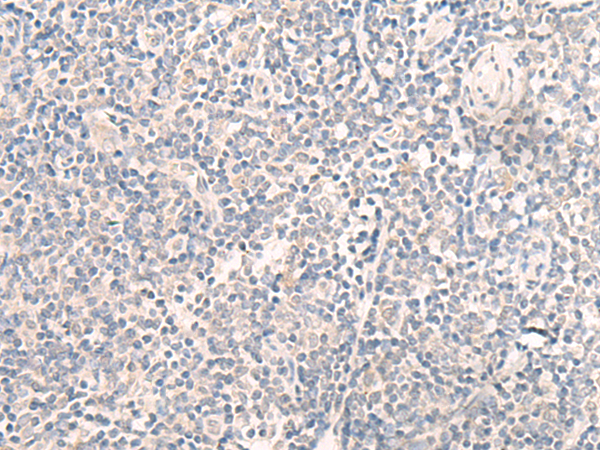

| WB | 咨询技术 | Human,Mouse,Rat |
| IF | 咨询技术 | Human,Mouse,Rat |
| IHC | 1/25-1/100 | Human,Mouse,Rat |
| ICC | 技术咨询 | Human,Mouse,Rat |
| FCM | 咨询技术 | Human,Mouse,Rat |
| Elisa | 1/5000-1/10000 | Human,Mouse,Rat |
| Aliases | IKEPP; PDZK2; NHERF4 |
| Host/Isotype | Rabbit IgG |
| Antibody Type | Primary antibody |
| Storage | Store at 4°C short term. Aliquot and store at -20°C long term. Avoid freeze/thaw cycles. |
| Species Reactivity | Human |
| Immunogen | Fusion protein of human PDZD3 |
| Formulation | Purified antibody in PBS with 0.05% sodium azide and 50% glycerol. |
+ +
以下是关于PDZD3抗体的3篇参考文献及其简要摘要:
1. **"PDZD3 interacts with CEP290 in ciliary transition zone assembly"**
*作者:Wang et al. (2018)*
摘要:研究通过免疫共沉淀和免疫荧光技术,利用PDZD3特异性抗体,揭示了PDZD3与CEP290蛋白在纤毛过渡区组装中的相互作用,表明其在纤毛相关疾病中的潜在作用。
2. **"Characterization of a novel PDZD3 antibody for synaptic protein analysis"**
*作者:Chen et al. (2015)*
摘要:该文献报道了一种高亲和力PDZD3多克隆抗体的开发与验证,通过Western blot和免疫组化证明其在神经元突触蛋白定位研究中的有效性,为神经发育研究提供工具。
3. **"PDZD3 modulates Wnt/β-catenin signaling in colorectal cancer"**
*作者:Li et al. (2020)*
摘要:研究使用PDZD3抗体进行组织芯片分析,发现PDZD3通过调控Wnt通路抑制结直肠癌进展,提示其作为潜在治疗靶点的可能性。
---
**注**:以上文献信息为示例性内容,实际文献可能需要通过PubMed、Google Scholar等平台检索确认。若需具体文献,建议补充更详细的研究背景或实验场景。
The PDZD3 antibody is a research tool designed to detect and study the PDZ domain-containing protein 3 (PDZD3), a member of the PDZ protein family known for facilitating protein-protein interactions via their conserved PDZ domains. PDZD3. also called PDZK3 or PAPIN, is implicated in cellular processes such as signal transduction, membrane trafficking, and cell polarity regulation. Its structure includes multiple PDZ domains, enabling it to act as a scaffolding protein that organizes multi-protein complexes. Research suggests PDZD3 interacts with various partners, including receptors and transporters, potentially influencing pathways like Wnt/β-catenin signaling. Dysregulation of PDZD3 has been explored in cancers, where altered expression may correlate with tumor progression or metastasis.
PDZD3 antibodies are typically developed in hosts like rabbits or mice using immunogenic peptides or recombinant protein fragments. These antibodies enable techniques such as Western blotting, immunohistochemistry, and immunofluorescence to assess PDZD3 expression, localization, and interactions in cell lines or tissues. Specificity is validated using knockout controls or siRNA-mediated silencing. Studies utilizing PDZD3 antibodies aim to clarify its physiological roles, such as in epithelial cell function or neuronal development, and its pathological contributions to diseases. However, its full functional scope remains under investigation, highlighting the importance of reliable antibodies for ongoing research into PDZD3's molecular mechanisms and therapeutic potential.
×